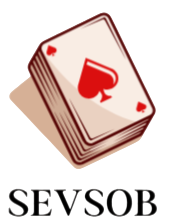The art of slot game design is a fascinating blend of creativity, technology, and psychology, where graphics and sounds play a pivotal role in creating an engaging player experience. At the heart of this design process lies the goal of immersing players in a visually captivating world while also stimulating their auditory senses. Designers carefully curate every visual element, from the game theme to the symbols on the reels, ensuring they resonate with the intended audience. Themes can vary widely from classic fruit machines to intricate fantasy worlds or popular culture references each requiring a unique artistic style that reflects its narrative and appeals to specific player demographics. The use of vibrant colors, detailed animations, and thematic illustrations is paramount. Designers must consider not just aesthetics but also the practicality of how these elements function together on screen, ensuring clarity and ease of use. In tandem with visuals, sound design is equally crucial in slot game creation.
The sounds associated with spinning reels, winning combinations, and bonus rounds are designed to enhance the overall experience with bendera138. Every sound effect, from the clink of coins to celebratory music, is strategically implemented to evoke emotions and heighten anticipation. For example, the gradual buildup of music during a bonus game can create suspense, while triumphant fanfares signal wins, reinforcing positive feedback for players. This synergy between graphics and sound is carefully orchestrated to maintain player engagement and encourage prolonged gameplay. Moreover, psychological factors significantly influence game design. Understanding what motivates players whether it is the thrill of risk, the allure of big wins, or the joy of interactive features is essential for designers. Incorporating elements of gamification, such as progress tracking, levels, and achievements, can enhance the gaming experience by fostering a sense of accomplishment. Designers use feedback loops rewarding players with small wins or bonuses to keep them invested in the game, creating a cycle of engagement that can lead to extended play sessions.
The technological aspects of slot game design have also evolved dramatically, thanks to advancements in software and hardware. Modern games leverage sophisticated graphics engines to produce high-quality visuals and fluid animations, enhancing the overall look and feel. 3D graphics and augmented reality are increasingly becoming part of the landscape, providing players with more immersive experiences. Additionally, mobile gaming has prompted designers to consider different screen sizes and orientations, leading to responsive designs that ensure a seamless experience across devices. Testing and player feedback are integral components of the design process. Designers often engage in user testing to gather insights on how players interact with the game. This feedback helps refine visual elements and sounds to enhance player satisfaction and engagement. By continuously iterating on designs based on player preferences, developers can create more appealing and successful games. Ultimately, the art of slot game design transcends mere entertainment; it is a carefully orchestrated experience that combines visuals, sounds, and psychological elements to captivate players.
